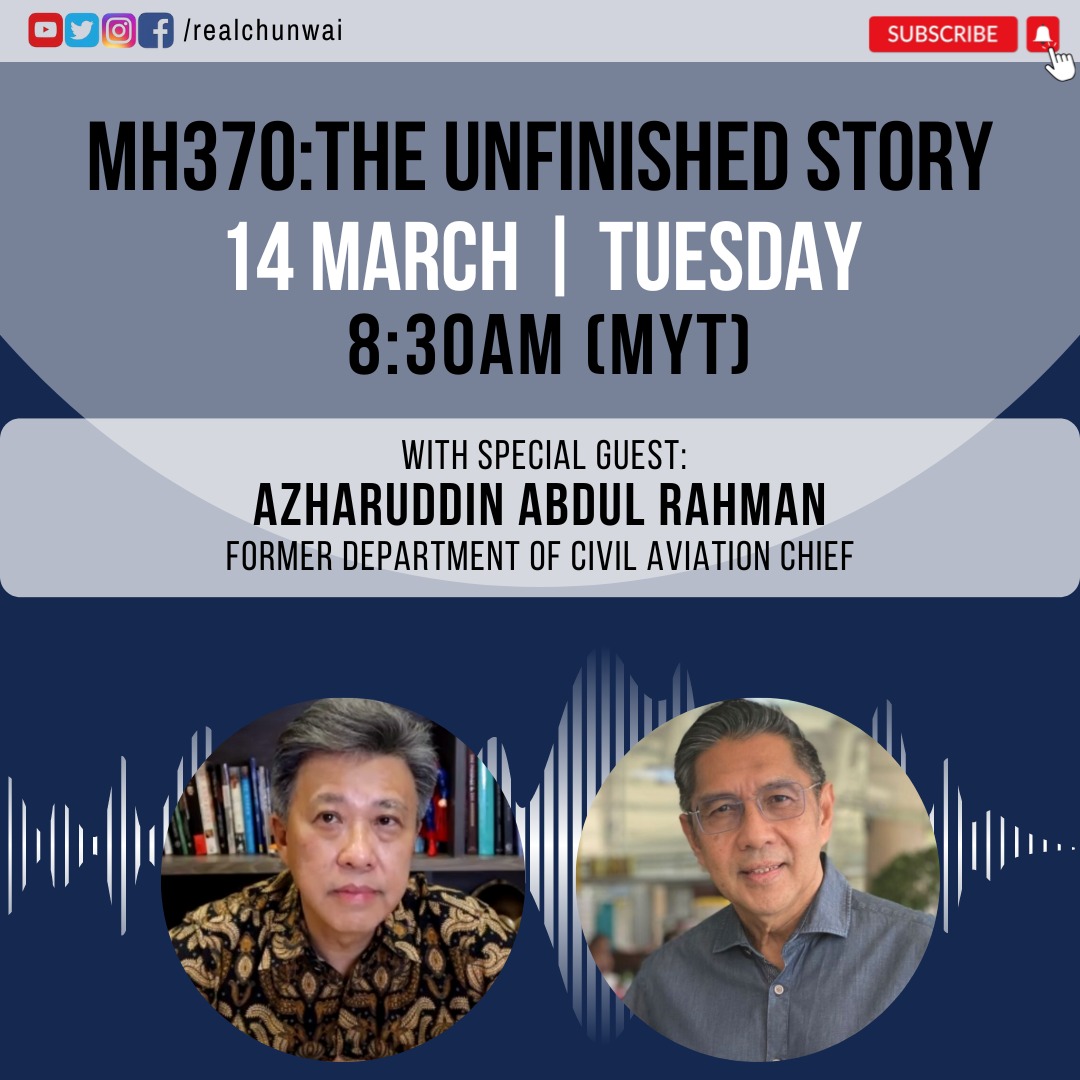

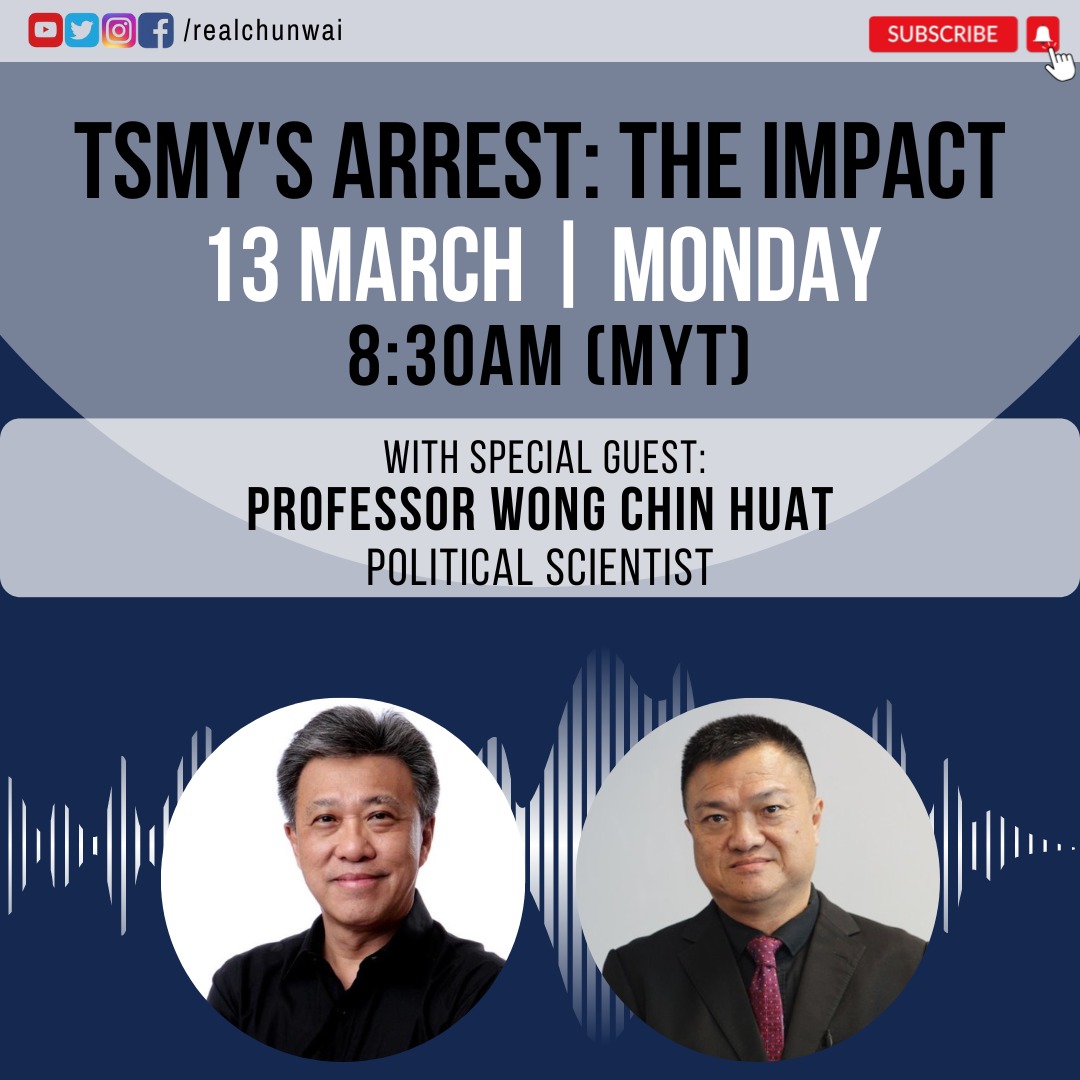
IT’S strange that it has taken more than two years for most Malaysians to be aware of the indie movie Mentega Terbang, which has suddenly been besieged by controversy.
The movie has earned the wrath of many Muslims, with at least six police reports already made.
It was only when the picture was screened on Viu, a regional video streaming platform, that it drew critical attention.
It was then taken down on Feb 26, but the entire film has been uploaded on YouTube.
A check yesterday, however, revealed that it has disappeared from YouTube. I won’t be surprised if it re-appears again.
It received over 24,000 views within a day while the official trailer garnered 181,000 views. The traction has likely exceeded the producer’s expectations.
The film was screened at the Jogja-Netpac Asian Film Festival in 2021 and the Aceh Film Festival in 2022, as well as at closed door screenings in Malaysia.
So, why the furore now? No one is sure.
Communications and Digital Minister Fahmi Fadzil is right to raise doubts and question the delayed reaction after two years.
Arguably, it looks like a hot political potato that’s been thrown like a grenade onto the new government to test its commitment to Malays and Islam, with state elections merely months away.
The race and religion narrative has predictably received a new lease on life by opponents of the unity government, who want to portray themselves as the flagbearers of Malay rights and Islam.
Those results aside, the movie has indeed earned a lot of ire on social media among Muslims.
Still, it’s uncertain how many of these critics have watched the entire movie.
There are a few local movies that address the subjects of religion, human mortality, and life after death.
They promote thinking and discussion relating to religion, which seems rare since producers would rather invest in projects that have appeal and promise financial returns.
Religion, regardless of faith, is supposed to bring believers and non-believers together, but it can also be divisive.
So, the safest way is to stay out, especially if a filmmaker aspires to have mass appeal.
In an interview by an Indonesia film critic, Mentega Terbang producer Khairi Anwar described it as a passion project involving friends from multiracial backgrounds from the local theatre scene.
It had a small budget with a handful of actors and minimal shooting, done mostly during weekends because the crew had full-time jobs. Filming was completed in six weeks with rehearsals done in the evenings.
I’m not sure if they expected a backlash. The dialogue, mostly in Malay and English, is representative of an urban Malay family living in Kuala Lumpur.
Both mum and dad are open-minded and liberal – a word now criminalised by conservatives – and they encourage their daughter, Aisyah, an inquisitive 15-year-old, to ask questions and make independent decisions.
However, the proverbial red line is crossed when Aisyah, played by Syumaila Salihin, tries eating char siew pau (pork bun) and in another scene, dad gives Aisyah the freedom to choose another faith.
It earns an immediate rebuke from her, with dad, played by Firdaus Karim, saying he had picked Islam as his faith and would continue to embrace it. The movie ends with Aisyah’s reaffirmation of her faith.
There’s a part where a nosy but well-meaning neighbour, Uncle Kasim, advises Aisyah not to accept any drinks from a Christian, Aunty Esther, because “it may contain holy water.”
Of course, it was meant to be sardonic because Christians certainly don’t use holy water. In fact, that’s purely a Catholic practice when entering a church. And since Covid-19, it has been dispensed with entirely.
Aisyah’s father has a tattoo in the shape of a butterfly on his body, which is forbidden in Islam and Christianity, too.
Both religions are against it since it involves changing the natural creation of God and inflicting unnecessary pain in the process.
The essence of the movie is about Aisyah, who fears losing her cancer-stricken mum, and hopes for her to go to heaven.
In between, the insecure girl tries to learn more about other faiths, including the belief of reincarnation.
While this is a work of fiction, it’s understandable that many Muslims are uncomfortable with this discourse about Islam, with the impression that the tenets of Islam are challenged.
To these critics, there seems to be an underlying theme questioning the faith.
There are calls to ban the movie, but with the way the Internet works, it will simply pop up on many other video sharing platforms.
It’s impossible for the government to order a ban unless we have our own alternative video sharing platforms like China’s Weibao.
Film producers have also begun to pitch their work to Netflix and Amazon Prime, for example, to reach a wider audience, if not a global one, and bypass our censors with their many restrictions.
Malaysian subscribers of these platforms would know that many of these movies would never reach our cinemas or Astro, like the Israeli television series Fauda, for example, if our censors’ criteria are to be strictly followed.
YouTube and Google have made many things possible.
For example, a Bahasa Indonesian movie made in 2018 about a forbidden romantic relationship between a Roman Catholic nun and a pastor, is available online in its entirety.
Even the Bahasa Malaysia version of the Bible, which has always been contentious, can be downloaded and printed.
In the case of Mentega Terbang, the authorities have admitted that they can’t act against its content but merely its production procedures.
Still, if the intention of the team behind the movie was to explore interfaith discussion, it could have been done in a much better way.
The narrative hasn’t helped and may have set back good efforts for interfaith understanding and acceptance. If the intentions were good, then the execution didn’t match, unfortunately.
But there are still merits. There is good acting, especially from Syumaila, a PJ girl who speaks impeccable English, while the conversations, as spoken by Malaysians, sound authentic.
The minus point is that producers may now be wary of taking hard, thought-provoking subjects that challenge mindsets and test conventions in local movies beyond Malay gangsters and giggly ghosts, which unfortunately, are the regular fare.
It is most unfortunate that for many of us, we are wary of entering houses of worship of the other faiths beside ours. We are unsure but we do not have those uncertainties when we are overseas.
So in one scene, where Aisyah is in Brickfields, KL, and she seems captivated by the church and temples there, surely there should be no taboo over this unless we are overly sensitive.
But regardless of whether we like or detest Mentega Terbang, a few of my friends have just learned that it’s not “flying butter” but a literal translation of “butterfly,” which is a symbol of change and rebirth.
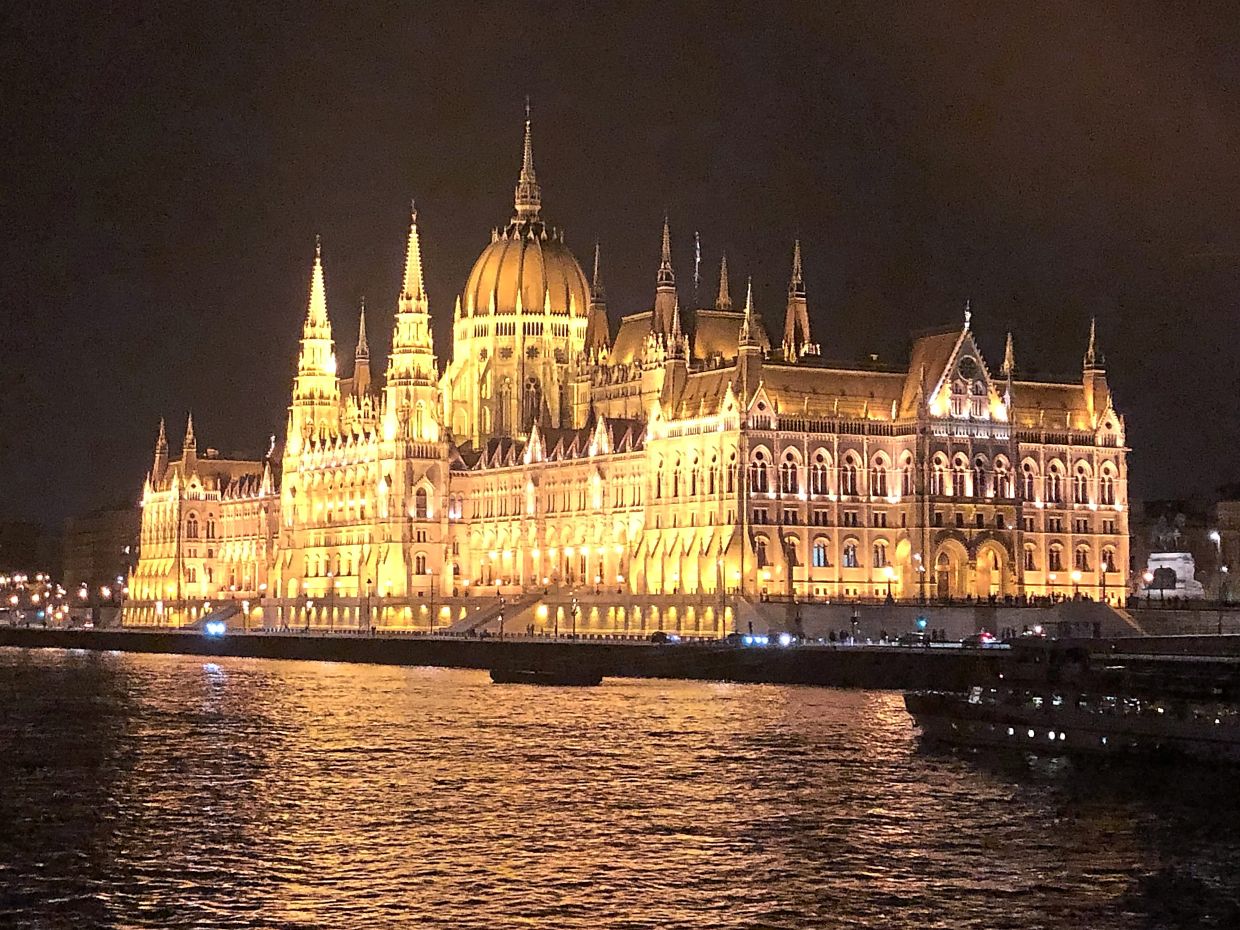
The Hungary Parliament Building is beautiful, especially at night. — Photos: FLORENCE TEH
For those planning a vacation to Europe next month, beyond the Malaysian favourite city of London, they should consider Budapest in Hungary.
April is the best time to visit this city as the weather will be very pleasant by then.
It’s easy and safe to stroll around the city, especially along the beautiful river Danube that the city straddles.
With a population of just about two million people, it’s neither crowded nor is the city choking with traffic.
The typical Asian tourists, including many Malaysians, feel that they need to do the touristy thing when they visit a foreign country.
They need to take countless pictures posing for their social media, visit as many tourist spots as possible and go shopping to ensure that their money has been well-spent on the trip.
The Westerners prefer to just relax, read a book by the pool and sip martinis. They certainly know how to relax better than Asians, let’s be honest. Ultimately though, each to his own.
Many hotels now want to be recognised as resorts, with wellness facilities and serene surroundings.
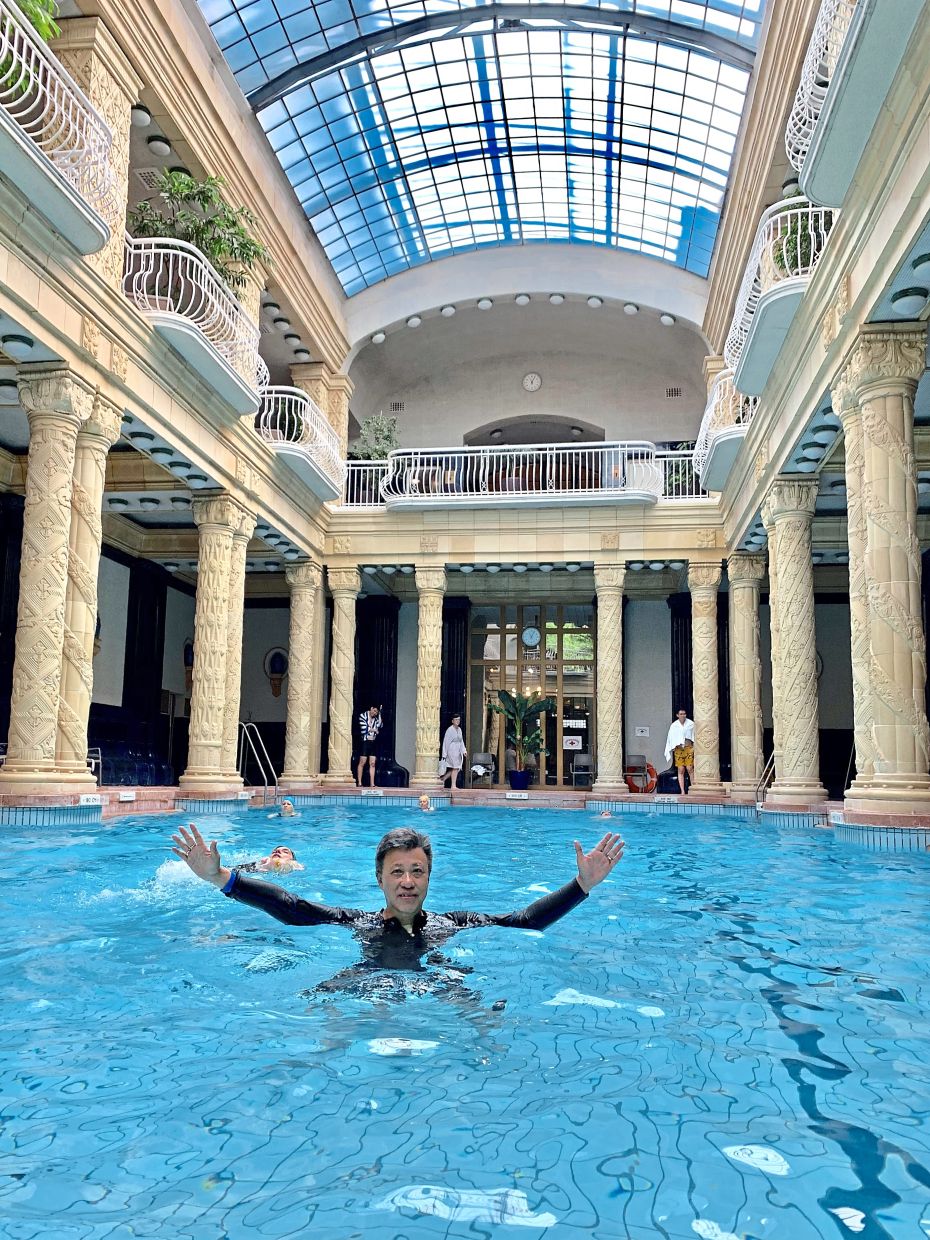
The writer enjoying a soak in the Gellert Baths and Hotel thermal spa in Budapest.
Budapest probably has the most thermal baths and spas in Europe.
Like Bath in Britain, Budapest, too, was colonised by the Romans, who left this legacy of public baths.
There’s plenty to choose from in Budapest, but I settled for the 1918-built Gellert Baths and Hotel for its privacy and well-preserved art nouveau interior, which includes colourful mosaics, marble columns and statues.
The Szechenyi Baths is certainly more famous and makes for better Instagram content, but you’ll likely need to jostle for space with locals and tourists.
It’s an iconic spot and the most famous spa, so it will be tempting.
But as a history buff, I picked Gellert because I read somewhere that the bath offers medicinal water treatments using the same deep underground springs sourced by the Knights of St John in the 12th century.
It was a Christian order whose primary objective was to look after the wounded and ailing crusaders, according to reports.
Gellert is also located by the Danube and merely walking distance from the boat I boarded for a river cruise. The building of Gellert itself is one of the many beautiful attractions along the river.
The Danube is Europe’s second longest river and runs through 10 countries, flowing from the Black Forest of Germany to the Black Sea in Romania.
My river cruise on the SS Maria Theresa began in Germany and travelled through Austria, Slovenia and ended in Hungary.
Gellert is on a 235m high hill overlooking the city and nothing beats walking up the slope and eventually immersing in the warm water of the thermal spa.
Along the river, the most famous site is certainly the Gresham Palace (home of the Four Seasons Hotel) and the 19th century Hungarian Parliament building.
But no trip to Budapest is complete without a pilgrimage to the world’s most beautiful café, which requires a three-week advance booking.
It’s ironically called the New York Café, as the building used to house the headquarters of the New York Life Insurance Company, but it was also the home of influential newspapers which were edited upstairs.
Many famous Hungarian literary figures were drawn to the place, and they included hungry and struggling writers.
The grandiose eclectic four-storey building is the work of architect Alajos Hauszmann, who was commissioned to plan the Italian Renaissance styling.
Following World War II, it was left to languish and even served as a sporting goods store at one point. Hungaria was its new name when it reopened in 1954, but only in 2006 was the café restored to its original glory and became part of a luxury 107-room five-star hotel.
The café is simply stunning and spectacular beyond words. I feel truly blessed and privileged to have been able to make my way to this place.
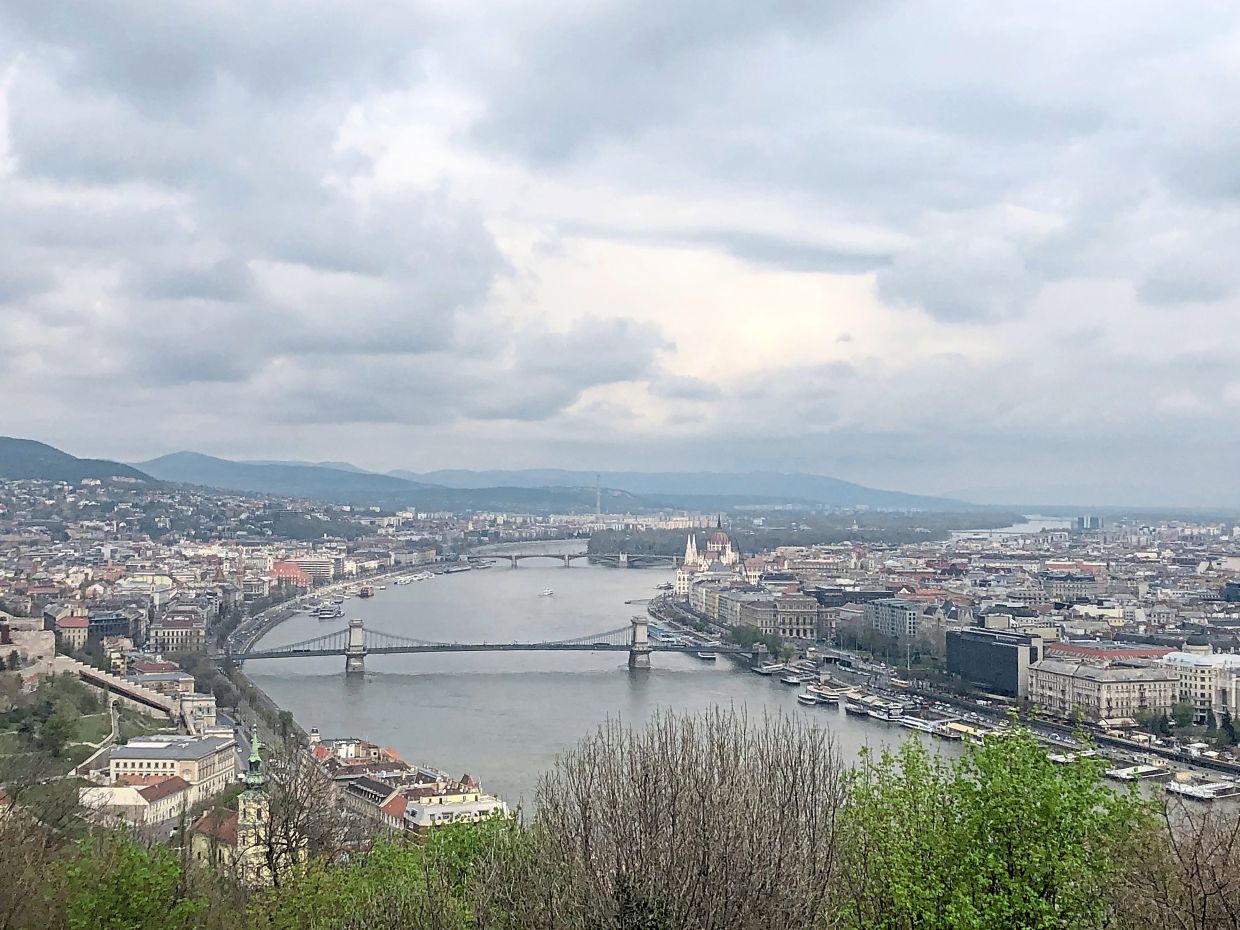
It is easy to navigate around the city of Budapest.
I closed my eyes and let my imagination run wild, as writers do, and pictured what it would be like at the end of the 19th century at this café, with fellow journalists, poets, writers and thinkers, with all the chatter and sounds of the time.
I spent a lot of time in Budapest just sitting outside the many cafes, watching the world go by.
I didn’t think it was a waste of time because it gave me space to truly reflect on my life.
When you’re 62 years old, you come to terms with many things in life and adopt a different set of priorities because time goes by quickly.
I began planning my retirement after watching the dancing northern lights in rural Utsjoki, Finland, in 2017, and then made the final decision at the Ristorante Bar in Bellagio, Italy, the following year.
Indeed, there’s more to life than board meetings.
Since I’m not rich and want to travel frequently, I fly mostly on “cattle class” (economy class) and join tours which require the standard wake-up call of 6am, especially countries known for hassling and dishonest touts and scammers.
I’m too old to be a budget backpacker, so I need to stretch my weak ringgit.
But my mentor and friend, Malaysia’s most famous traveller and photographer, Yusof Hashim, has convinced me that money isn’t yours until you spend it, live simply, see the world, and leave nothing behind!
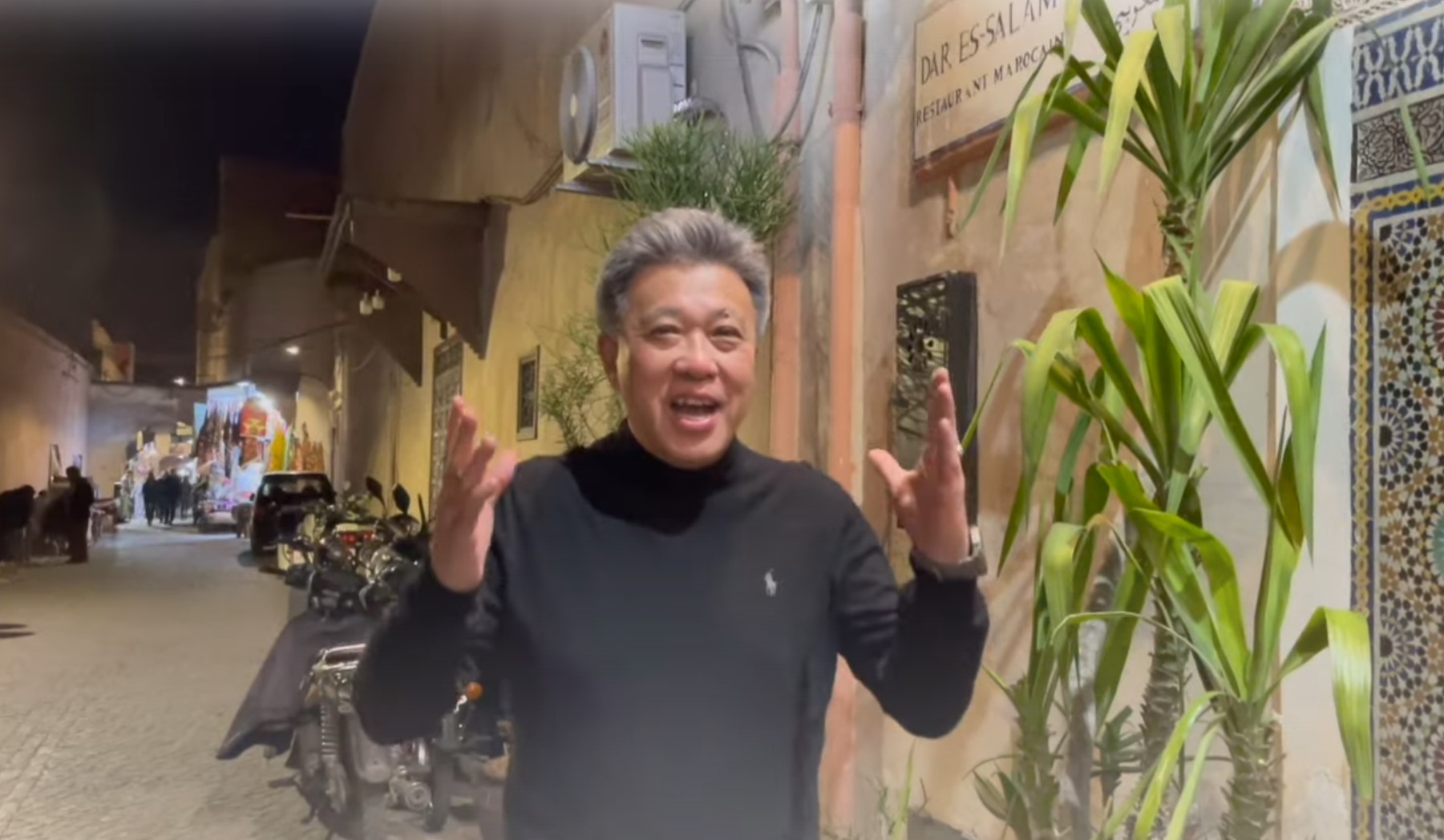
Iceland

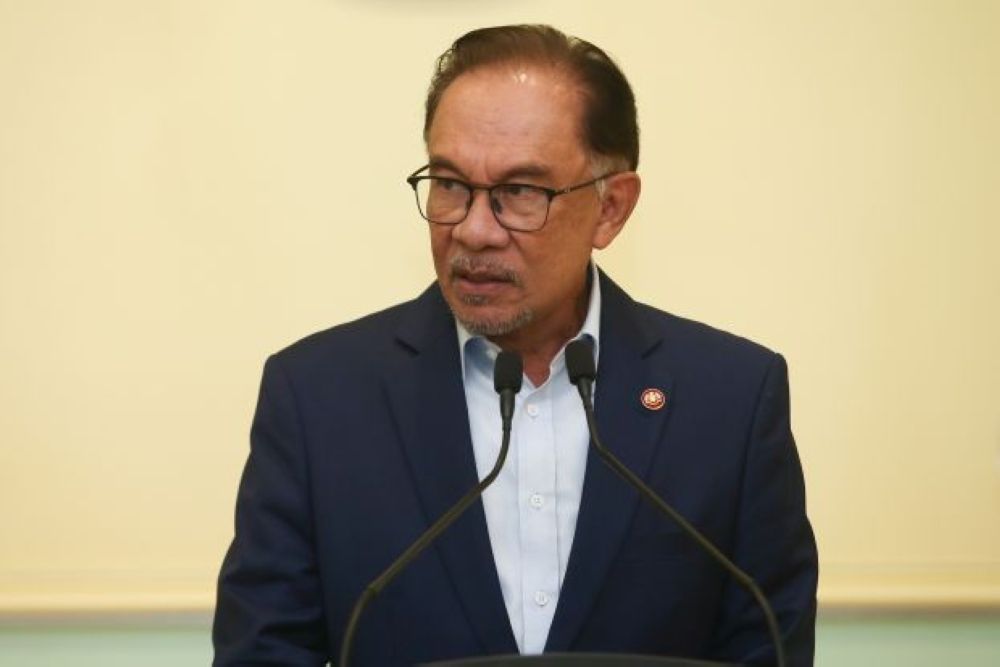
IF there’s one point that has been unceremoniously downplayed in the volumes of news reports and articles about the Prime Minister’s 100 days in office, it’s that Datuk Seri Anwar Ibrahim is the country’s first PM from a multi-racial party.
His predecessors have been from Umno, which led the Alliance and then Barisan Nasional coalitions.
Parti Pribumi Bersatu Malaysia, which is headed by Tan Sri Muhyiddin Yassin, is mono-ethnic with Malay rights its predominant priority.
Anwar is the first PM to head a unity government which includes parties PKR has bumped heads with.
He has also taken on the job while Malaysia is facing huge financial constraints resulting from many factors, including the damaging 1MDB scandal.
As we take stock and assess his 100 days in office with his hits and misses, it’s important to remember how tightly bound his hands are.
The sound bites from his opponents suggest that the “traditional” race and religion card is being used yet again ahead of the elections in six states.
These politicians are compelled to believe that this is the most effective weapon – at least for Malay voters outside Selangor, Kuala Lumpur and the major cities.
Tun Dr Mahathir Mohamad, who quit Pejuang to join Putra, is still claiming the Malays are left behind although he had the chance to change that in his 22 years as PM.
He has insisted that the Malays have lost their dominance in politics in Malaysia, on top of their lack of economic control.
It’s quite amazing that the nonagenarian, who still doesn’t understand why he lost his deposit as a candidate in the GE15, has now claimed that the government may change electoral boundaries to reduce Malay constituencies.
The reality is that the Malays in Peninsular Malaysia will continue to dictate the political bearing of the country as they form the majority in 57% or 128 of the 222 parliamentary seats.
The Chinese have only 37 majority seats and the community’s population continues to shrink.
Sarawak has 31 and Sabah 25 seats with the breakdown of 10 Malay/Melanau, 10 Iban, six Chinese, two Orang Ulu and three Bidayuh, while in Sabah, the Chinese have three, non-Muslim nine and Muslims have 13 majority seats.
In 2021, it was reported that the number of Malays in Penang was increasing and has already outnumbered the Chinese by 0.7% and for sure, it will get higher.
We’d like to know if Dr Mahathir is making those assumptions to drum up the fear factor.
He’s not alone though. PAS president Tan Sri Abdul Hadi Awang is fond of that same MO.
The Marang MP has twice said that the unity government could collapse any time soon, but that prediction sounds baseless, so I don’t think many Malaysians will buy it.
His party has governed Kelantan for three decades and it’s incredulous how PAS can tell non-Muslims that it’s a model state when it’s one of the poorest.
It can’t even provide clean water, and one wonders how it can uplift the economic status of the Malay majority there.
Old guard politicians like Tan Sri Annuar Musa and Datuk Seri Shahidan Kassim have also used the same race and religion narrative, angling to have the optics of being champions for the Malays and Islam.
So, let’s give credit where it’s due. Race and religion haven’t been Anwar’s narrative, and instead, he has reminded Malays that corruption is the main threat.
His standing among the Malays remains a sensitive point as survey readings show contrasting results.
The issue remains a hot topic with Anwar insisting that his party’s research had placed Malay support for Pakatan Harapan at 31%. Last year, Bridget Welsh claimed Pakatan only polled 11% in GE15 and she was immediately challenged.
Merdeka Centre has found that the PM’s approval rating in a survey, held from Dec 26 to Jan 15, stands at 68% involving 1,209 voters across all ethnic groups.
All these surveys provide a barometer of the people’s opinions, although we may question the methodology and accuracy. That said, Malaysians are generally well-informed on issues.
The cost of living, job security and education were top concerns before GE15, and these haven’t changed within 100 days, so we don’t need desk-bound academicians to tell us that.
Ahead of the state elections, the unity government will depend on Umno to deliver the Malay votes, but it wasn’t able to do so in GE15.
Umno president Datuk Seri Dr Ahmad Zahid Hamidi has said that there were no factions in the party, but the consensus knows he was merely being politically correct.
He will have a small window of opportunity to bring the party together, following the party polls and a series of sackings and suspensions, to campaign in the polls.
It’s also not helpful for non-Malay leaders in the government to be talking about recognition for the Unified Examination Certificate (UEC) for Chinese independent schools and reforms in the civil service.
The timing isn’t right and there are no quick fixes, but more importantly, they don’t need the PM’s immediate attention.
His hands are tied and given the short 100 days, I think Anwar has done a decent job. Let’s not expect miracles.
The 100 days is an indicator to evaluate a leader’s performance, but the US-based Brookings Institute has also described it as “somewhat arbitrary and an artificial milestone” and as quoted by David Alexrod, a top aide during President Obama’s time, it is as an occasion of “having lots of attention but no significance.”
Its origin dates to President Hoover’s reign during the 1930s, whose 100 days were marked with bold and new actions.
Malaysia needs a fresh story for the world beyond race and religion and corruption.
We have a PM with extensive global goodwill. Let’s use it to the fullest.
IT’S been 10 years since a group of Sulu gunmen loyal to the self-proclaimed Sultan of Sulu, Jamalul Kiram III, intruded into Lahad Datu in Sabah on Feb 9, 2013.
There were two fronts – one group landed in Lahad Datu’s coastal Kampung Tandao and another at Kampung Simunul in Semporna town.
As the fighting broke out between our security forces and these attackers, which led to casualties on both sides, I headed for Simunul.
I arrived at the sprawling village, with houses on stilts on the outskirts of Semporna, just a couple of days after six policemen were gruesomely killed.
The police immediately carried out a mop-up operation which saw seven of these Filipinos killed and even as I landed, the near deserted village remained a security risk.
Ten years later, I am still asking myself what made me decide to go to Kampung Siminul, the largest of the squatter colonies scattered along the Sabah coastline.
It remains a maze of rickety walkways and when I walked in then, it hit me immediately: why our brave policemen got lost inside and found themselves trapped by seven heavily- armed attackers.
I took a one-and-a-half-hour journey by road from Lahad Datu to Semporna, a distance of about 140km.
At Kampung Simunul, most of its thousands of settlers, mainly Suluk, had disappeared, with their homes locked up and belongings removed to safer places.
But several villagers had steadfastly remained, saying they did not want to camp out in a school hall or community centre.
My colleague from the Kota Kinabalu bureau, Muguntan Vanar, had made calls to local contacts to guide us into the village. I told myself we were taking a huge risk, but it was for a scoop. My dear wife, who is adventurous by nature, was crazy enough to follow me in.
I remember getting a call from a senior police officer demanding to know what we were doing there without informing the police!
It was a frightening time. No one knew the actual size of this village. Some said there were between 300 and 500 houses in there, while others claim that the number was closer to 1,000.
Today, not much has changed, I am told.
This is home to the Suluks, who fled the southern Philippines in the 1970s during the civil war in Mindanao. They had originally settled in refugee enclaves set up by the UNHCR, the United Nations refugee agency, but some had since become Malaysian citizens, while a large number probably had no documents with them.
The water village has a reputation for harbouring bad hats, and the locals avoid entering the area.
It is difficult to navigate the maze of wooden boardwalks, and in the incident on March 5, 2013, that was how our policemen were ambushed as they lost their way in this place.
When I walked into Lorong 4 with my colleagues, we felt like we were being watched by figures in the shadows. An elderly man approached us and asked what we were doing there. He seemed a little friendlier when we told him we were from the media.
“Do you want to see the bullet holes and the spots where the three gunmen were killed?” he offered, as a few others suddenly appeared to join us.
I had to watch my step, as one could easily fall into the water as the boardwalk had many gaping holes.
“The water below was filled with all sorts of rubbish, and a horrible stench emanated from it. I could not help wondering how these people live in such filthy conditions,’’ I wrote in my article in 2013.
We had to take a detour to reach Lorong 5, where the fight took place, because village headman Ramli Sara-man had ordered the boardwalk from Lorong 4 to be broken down as a symbolic gesture to show the “bad men” were from Lorong 5.
They showed us a home that was riddled with bullet holes and pointed out the spots where three of the intruders were killed, and their bodies left untouched for three days.
One was on a boat, one on the walkway and another on the verandah of a home. The splattered blood, close to where the bodies were found, was still very visible when we arrived.
The bodies, which included that of a Filipino councillor of Pulau Sitangkai in the southern Philippines, were eventually removed for burial by the religious authorities.
But the superstitious villagers excused themselves when we walked towards the abandoned home where a policeman was beheaded, saying they did not want to go into that “house of evil”.
We saw what appeared to be the remains of human tissue – it looked like parts of a human brain – by the wooden entrance.
Today, as I read news reports of the heirs of the so-called Sulu Sultanate taking legal action to seize our national assets, I am infuriated.
Not many Malaysians are aware that two of our men in blue were beheaded while another had his eyes gouged out. That was how cruel these intruders were.
I remember walking inside the house even as I thought of the horrible and cruel acts that had been carried out by these heartless militants.
I felt angry and sad at the same time, wondering how human beings could carry out such brutal acts.
The television set had clear traces of blood, which horrified me. The walls of the home were adorned with family photographs, like most ordinary homes, except that something extraordinarily evil had taken place right there.
None of us wanted to stay longer than necessary in that place. As we walked out of the village, we came across a young boy who had come back to collect some of his belongings, saying the family was not ready to move back in.
The men we met said they feared more gunmen may come back and, more so, they feared repercussions from our security men. They said they were just ordinary people trying to eke out a living in peaceful Malaysia, but these militants had given the Suluks a bad name.
Ironically, the word “Semporna” is said to mean “a place of rest” or “a journey completed”, but it wasn’t so.
Many Malaysians have long questioned the influx of these foreigners into Malaysia, especially in Sabah, and if we do not take a stronger, even harsher, stand against such easy entry into our country, we only have ourselves to blame when security threats arise.
Semporna is the gateway to Sipadan, one of the world’s most beautiful diving spots, but it should never be a gateway for illegal immigrants.
It remains a huge dump site, an embarrassing eyesore to tourists, with the local council continuing to struggle with the bad practices of the people living there.
It is 10 years later, and we need to ask ourselves – have we put in enough resources, manpower and assets for our security to keep our long coastal line safe? Safe from these Sulu intruders whose families are hanging on to dreams of reclaiming what they think are their ancestral rights.